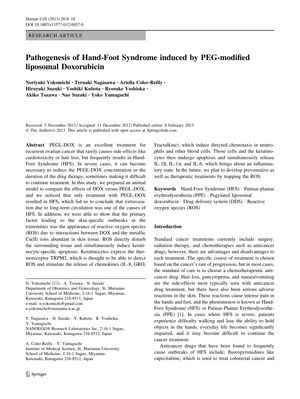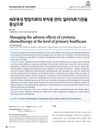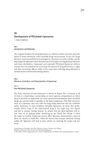Pathogenesis of Hand-Foot Syndrome Induced by PEG-Modified Liposomal Doxorubicin
February 2013
in “
Human cell
”

TLDR PEGL-DOX causes Hand-Foot Syndrome due to skin reactions from prolonged circulation and ROS generation.
PEGL-DOX was an effective treatment for recurrent ovarian cancer with minimal side effects like cardiotoxicity or hair loss, but it frequently caused Hand-Foot Syndrome (HFS). The study used an animal model to compare DOX and PEGL-DOX, finding that only PEGL-DOX led to HFS due to extravasation from prolonged circulation. The primary cause of skin-specific outbreaks was reactive oxygen species (ROS) generated from interactions between DOX and Cu(II) ions in skin tissue, leading to keratinocyte apoptosis. This apoptosis, detected by the thermoreceptor TRPM2, triggered the release of chemokines and cytokines, causing inflammation. Future research aimed to develop treatments to trap ROS and prevent HFS.



